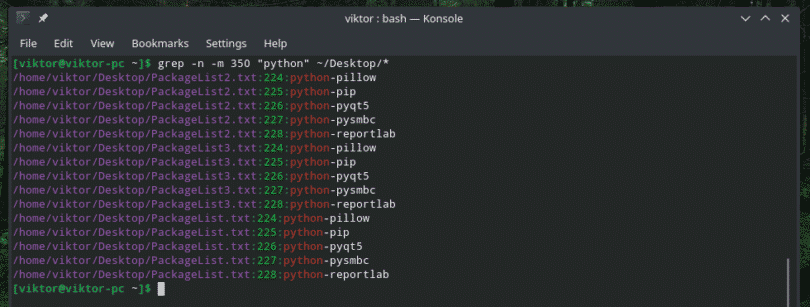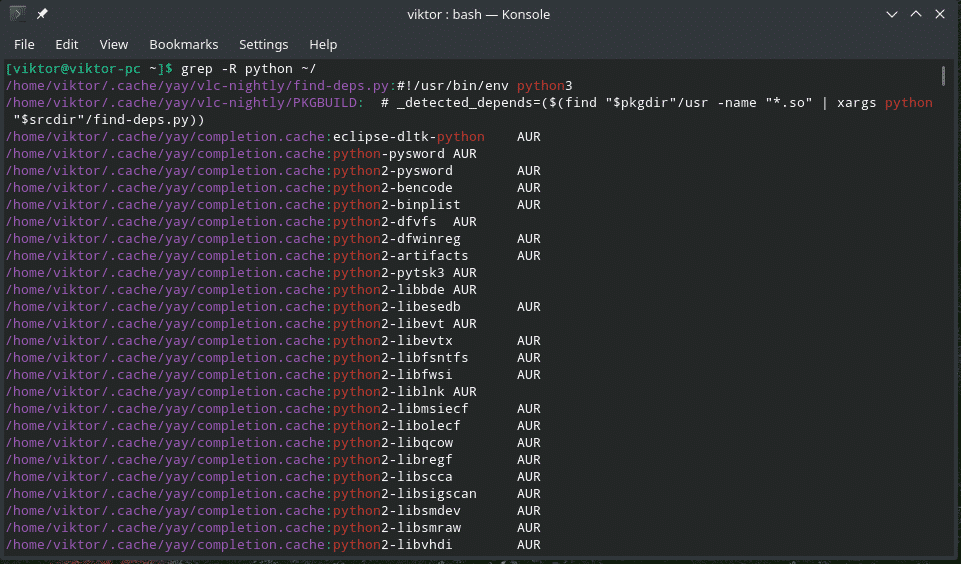
- Find in files grep recursive how to#
- Find in files grep recursive full#
- Find in files grep recursive free#
- Find in files grep recursive windows#
You can tell it to ignore patterns, files, and directories so that grep completes its searches faster, and you're not swamped with meaningless false positives. Of course, there are ways to reign grep in.
Find in files grep recursive how to#
Related: How to Use the grep Command on Linux

Sometimes it'll search files or directories you'd rather it didn't waste its time on, because the results can leave you unable to see the wood for the trees. Grep is famously-perhaps, notoriously-thorough and single-minded. This stood for global, regular express search, print matching lines. Line editor (incidentally, pronounced "ee-dee"). In order to use grep recursively, we must add the R tag after grep and change filetobesearched to directorypath.
Find in files grep recursive full#
If you want just the filenames, not full paths, replace Path with Filename. Select-String -Pattern 'foobar' Select-Object -Unique Path. Something like this: Get-ChildItem -Recurse. Grep can be used recursively if we need to search for a string pattern across multiple files in a directory. You can use Select-String to search for text inside files, and Select-Object to return specific properties for each match. You can use it alongside -name to search for directories. Example 1: Search Current Working Directory Recursively with grep Command. flag, find will operate in 'directory mode,' and only search for directories, not matching any files. In the Session log file, you can specify a path to a session log file.The option is available on the Preferences dialog only. The option is available when executing the extension only.

In the File mask box, specify a file mask to select files. By default, it's fully recursive, so it will search through all sub-directories to find matches. In the Text box, specify the text to look for. It takes its name from the g/re/p key sequence in the ed The find command is used to search through directories in Linux. What does work, if you are trying to locate a pattern in files of filetype: grep 'pattern' find. I have AIX 7.1.0.0 and neither grep -r or -R function recursively. The command below will search all the files recursively whose name matches the search pattern and will replace the string: find /path/to/searchdir/ -name. The linked question is different, does not address AIX and does not offer a working solution. Unfortunately, findstr has a very limited support for regex, according to the documentation and the patterns I've tried to use. it was developed in the early 1970s on Unix. Using just grep and sed, how do I replace all occurrences of: a. with b. within a text file under the /home/user/ directory tree recursively finding and replacing all. I tend to use findstr /sinp (recursive, case insensitive, skip binary files, and show line numbers) Steve Rowe. These let you describe what you're looking for, rather than have to explicitly define it. The power of grep lies in its use of regular expressions. NET which are not usually installed in server environments.The grep command searches text files looking for strings that match the search patterns you provide on the command line. The biggest issue was that they require dependencies such as.
Find in files grep recursive windows#
There are also various Windows binaries which can be used from a standard command prompt however I had limited luck with each one.


dir -Recurse | Select-String -pattern įor example: dir -Recurse | Select-String -pattern "Find Me"Īs you can see, its nowhere near the memorable Linux command grep -r but at least its now possible go get similar behaviour in a Windows environment. Use the below command inside the directory you would like to perform the ‘grep’ and change to match what you would like to match. With the introduction of PowerShell, Windows has given us the grep functionality albeit with a much less finesse than the Linux equivalent. You have to pipe multiple commands together one command to transverse the directories, and one command to look for the pattern within each file found. Not having grep, more specifically grep -r, is challenging at best and almost reason enough to avoid the platform entirely. Two major things come to mind tail for monitoring logs and grep which is the easiest way to find something in a file. Windows argument and focus on things I use everyday in Linux which are missing in Windows. if you did searchpattern htm to find searchpattern in all files containing the word htm, and the directory path to a file contained htm.
Find in files grep recursive free#
Let’s forget the argument of free software, the interchangeable GUIs, the security and everything else which constitutes the usual Linux vs. The thing I find most annoying with Windows is that it isn’t Linux.


 0 kommentar(er)
0 kommentar(er)
